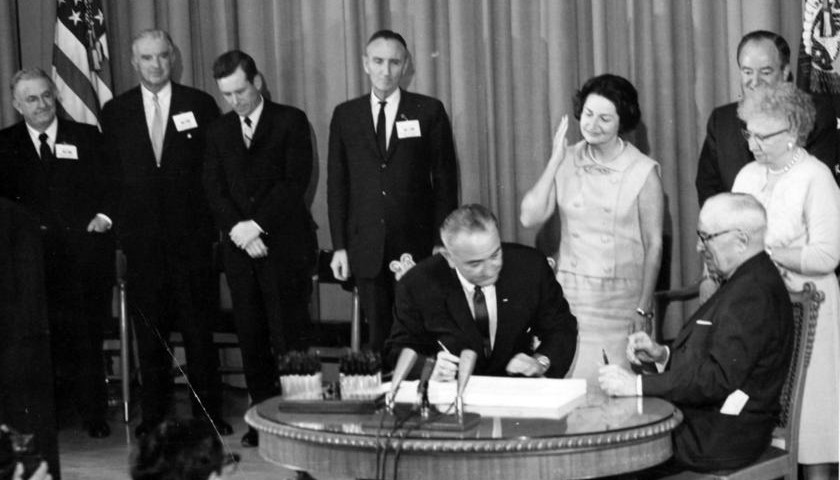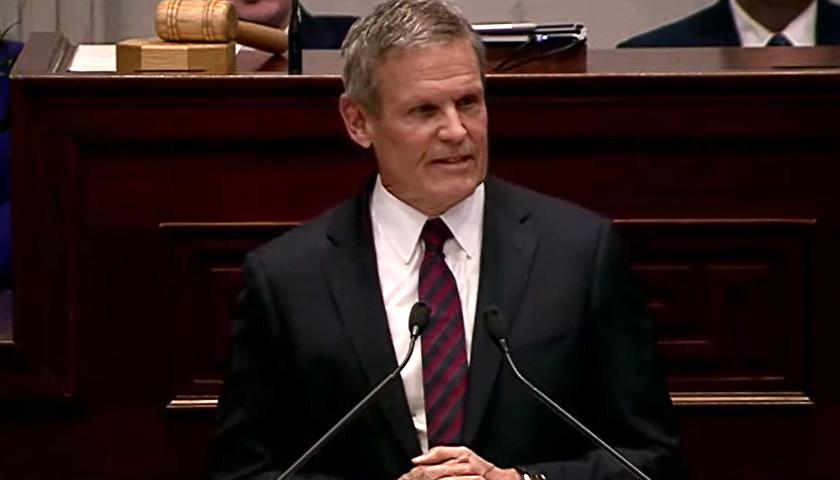As of Tuesday, poverty still exists in Tennessee and elsewhere around the nation.
But former President Lyndon Johnson promised us this wouldn’t happen.
Tuesday was the 55th anniversary of the day Johnson announced government would end poverty as we know it and he would thus begin his Great Society programs, costing the country trillions of dollars.
According to the most recent U.S. Census figures, Tennessee’s poverty rate is about 15 percent. According to the University of Wisconsin-Madison’s Institute for Research Poverty as well as Statistica.com, those numbers in Tennessee have remained almost level since the 1970s.
Memphis, meanwhile, is one of the poorest and most dangerous cities in the nation, according to media reports.
Johnson was unavailable for comment Tuesday to defend his actions —he died in 1973.
But if Johnson was still alive, The Tennessee Star would have a lot to ask him, especially about the taxpayers’ return on investment.
We’d ask him to defend the perverse incentives the feds taught poor people, thus changing some of their very natures. We’d ask him about the spike in illegitimacy rates and, by extension, the number of people in jail because of his policies.
According to Forbes, since the mid-1960s federal government officials have forced taxpayers to pay more than $20 trillion to end poverty. In exchange for all that money, the national poverty rate has dwindled from around 22 percent to today’s 12 percent, according to the University of California’s Center for Poverty Research.
More than $20 trillion of the taxpayers’ money.
Just for that.
Bottom line, poverty is still around. And it’s not going anywhere.
‘A Catastrophe’
In a 2014 Forbes column, business entrepreneur Louis Woodhill said Johnson’s War on Poverty is “a catastrophe.”
“The adaptation of the working-age poor to the War on Poverty’s expanded welfare state was immediately evident in the growth of various social pathologies, especially unwed childbearing. The adaptation of the middle class to the new system took longer to manifest, but it was no less significant,” Woodhill wrote.
“Even people with incomes far above the thresholds for welfare state programs were forced to adapt to the welfare state. As crime rates (driven by rising numbers of fatherless boys) rose in the cities, and urban schools’ systems became dangerous and dysfunctional, the middle class (of all races) was forced to flee to the suburbs.”
Many middle-class mothers had to go to work so their families could afford houses in good school districts and pay for higher taxes to accommodate the expanded welfare state.
Self-supporting families, Woodill said, had fewer children.
Writing for American Conservancy, Charles Murray said that 1949 poverty levels were around 41 percent. This, of course, was 15 years before Johnson declared a government war on poverty. But in that year, 1964, poverty levels had already dropped to 19 percent.
“Contemplate that pair of numbers for a moment. In just the 15 years between 1949 and 1964, the American poverty rate had dropped by 22 percentage points. What had the government done to help? By the definition of the 1960s and thereafter, nothing,” Murray wrote.
“The federal government sponsored no education programs for the disadvantaged. No training programs. No jobs programs. No community action. No affirmative action. No Head Start. No welfare whatsoever for men, and only a stingy cash payment for unmarried mothers, hedged with restrictions. The federal government was missing in action in the real war against poverty — and yet somehow America cut poverty by more than half.”
Also, in that same article, Josh Archambault suggested Washington D.C. officials transfer these welfare powers from the feds to the states.
“Past welfare reforms worked this way, with local officials able to decide how to get the right help to the right people and support them on their road to financial independence,” Archambault wrote.
– – –
Chris Butler is an investigative journalist at The Tennessee Star. Follow Chris on Facebook. Email tips to [email protected].









At the heart of this problem is moral hazard born of anonymity. Administering “benefits” by a large faceless, bureaucracy, far removed from the recipients, mandates that all recipients need to subscribe to the lowest common denominator with no incentive to develop self-reliance and no accountability. Migrating that administrative function down to the community level is the only viable solution. What works in Memphis may be totally dysfunctional in Minneapolis. The current administration recognizes that simple fact and is putting forward an agenda to remedy the problem.
This article would benefit from doing some actual research into the policies that are being enacted at the Department of Health and Human Services as well as Housing and Urban Development. Readers can comment on HHS regulations here: https://www.hhs.gov/regulations/comment-on-open-rules/index.html and HUD’s strategic plan can be found here: https://www.hud.gov/program_offices/spm/strategicplan2014_2018